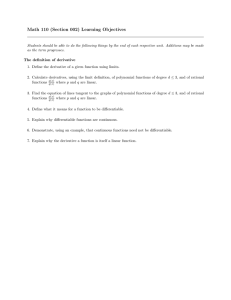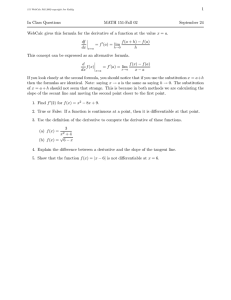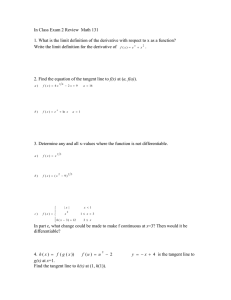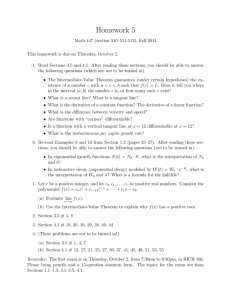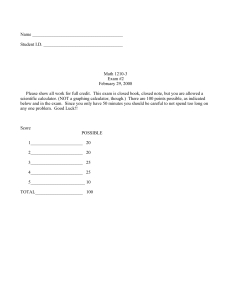Math 1100-5 Fall 2004 Review for Test I Information
advertisement
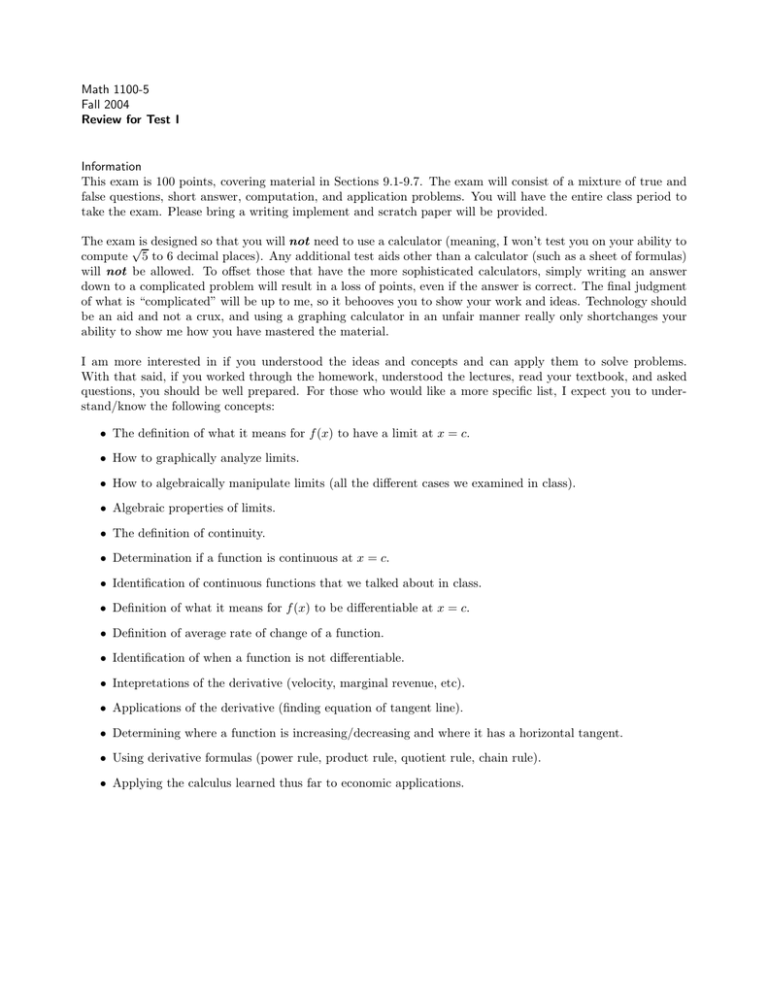
Math 1100-5 Fall 2004 Review for Test I Information This exam is 100 points, covering material in Sections 9.1-9.7. The exam will consist of a mixture of true and false questions, short answer, computation, and application problems. You will have the entire class period to take the exam. Please bring a writing implement and scratch paper will be provided. The exam√is designed so that you will not need to use a calculator (meaning, I won’t test you on your ability to compute 5 to 6 decimal places). Any additional test aids other than a calculator (such as a sheet of formulas) will not be allowed. To offset those that have the more sophisticated calculators, simply writing an answer down to a complicated problem will result in a loss of points, even if the answer is correct. The final judgment of what is “complicated” will be up to me, so it behooves you to show your work and ideas. Technology should be an aid and not a crux, and using a graphing calculator in an unfair manner really only shortchanges your ability to show me how you have mastered the material. I am more interested in if you understood the ideas and concepts and can apply them to solve problems. With that said, if you worked through the homework, understood the lectures, read your textbook, and asked questions, you should be well prepared. For those who would like a more specific list, I expect you to understand/know the following concepts: • The definition of what it means for f (x) to have a limit at x = c. • How to graphically analyze limits. • How to algebraically manipulate limits (all the different cases we examined in class). • Algebraic properties of limits. • The definition of continuity. • Determination if a function is continuous at x = c. • Identification of continuous functions that we talked about in class. • Definition of what it means for f (x) to be differentiable at x = c. • Definition of average rate of change of a function. • Identification of when a function is not differentiable. • Intepretations of the derivative (velocity, marginal revenue, etc). • Applications of the derivative (finding equation of tangent line). • Determining where a function is increasing/decreasing and where it has a horizontal tangent. • Using derivative formulas (power rule, product rule, quotient rule, chain rule). • Applying the calculus learned thus far to economic applications.

